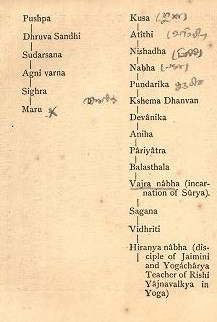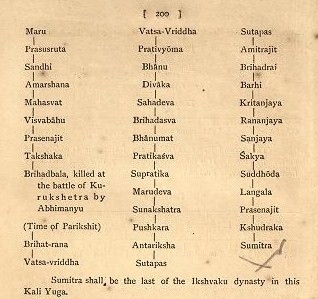Langala
| Author:Laxman Burdak, IFS (R) |
Langala (लांगल) is mentioned as a place name by Panini in Ashtadhyayi [1], a province in Mahabharata, and King in Bhagavata Purana. Alexander Cunningham[2] has identified with the great ruined city of Lakorian found between Khozdar and Kilat in Baluchistan.
Contents
Variants
- Langala लांगल (AS, p.815)
- Lang-kie-lo (of Xuanzang)
Jat clans
Mention by Panini
Langala (लांगल) is mentioned by Panini in Ashtadhyayi. [3]
History
Langa (लाङ्ग) or Langal (लाङ्गल) is variant of Langar Gotra of Jats.[4],[5]
Dahar (दहर) Jat tribe, akin to the Langah, found in Multan. [6]
Langaleswar - Langaleswar Mahadeeva temple is in Orissa.[7] The place is famous for its location and mythology Lord Shiva used to plough the paddy field. In memory of the same plough is there and hundreds of piligrims use to gather there to worship the Lord Langaleswar who has been named after that plough. Langaleswar is famous for Saivasim. The location of the temple by the side of river parvati too creates a senic beauty and makes another attraction of the place. Langaleswar is connected with a good motorable road (46 Kms.from Balasore).[8]
Langala village is there in Tahsil Umrala district Bhavanagar in Gujarat.
The Kapur tribe in Afghanistan has given their name to the village of Kapurdagarhi, or Fort of Kapur, in Yusufzi. It is the same place as the Langar Kot mentioned in the Afghan histories as the stronghold of the Dalazak tribe at the time they were conquered and driven across the Indus by the Mandanr and Yusuf, as will be related hereafter. [9]
Sandhya Jain[10] writes that Langala (लाङ्गल) - mentioned in 'geography' of Mahabharata (VI.l0.55) is listed in the Mahabharata Tribes with unclear position in Kurukshetra War.
Visit of Langala by Xuanzang in 641 AD
Alexander Cunningham[11] writes that These districts are described by Hwen Thsang under the general name of Lang-kie-lo, which M. Julien renders by Langala. M. de St. Martin, however, refers it to the tribe of Langa, but it is extremely doubtful whether this is an ancient name, The other name of Langalas, quoted from the Vishnu Purana, is only a variant reading of Jangalas, which is almost certainly the correct form, as it is immediately followed by Kuru-Jangalas. Hwen Thsang fixes the capital of Lang-kie-lo at 2000 li, or 333 miles, to the west of Kotesar in Kachh. But as this bearing would place it in the middle of the Indian Ocean, the
[p.311]: true direction must be north-west. Now this latter bearing and distance correspond with the position of the great ruined city of Lakorian, which Masson[12] found between Khozdar and Kilat. In older maps the name is written simply Lakura, which appears to me to be very fairly represented by the Chinese Lang-kie-lo, or Lankara. [13] Masson describes the ruined fortifications as " remarkable for their magnitude, as well as for the solidity and the skill evident in their construction." From the size and importance of these ruins, I conclude that they are the remains of a large city, which has at some former period been the capital of the country. The Chinese pilgrim describes the province as being many thousands of li in breadth as well as in length. It is clear, therefore, that it corresponded, as nearly as possible, with the modern district of Biluchistan, of which the present capital, Kilat, is only 60 miles to the north of Lakura. In the seventh century, the capital was called Su-neu-li-shi-fa-lo, and was 30 li, or 5 miles, in circuit. The Chinese syllables are rendered by M. Julien as Sunuriswara, of which he offers no translation. But as Hwen Thsang describes a magnificent temple of Siva in the middle of the city, I infer that the Chinese transcript may be intended for Sambhuriswara, which is a well-known title of Siva as the "lord of divine beings," or the " god of gods." By assuming that this name belongs properly to the temple, the other name of Lang-kie-lo, or Lakara, may be applied to the capital as well as to the province.
In Mahabharata
Langala (लाङ्गल) in Mahabharata (VI.l0.55)
Bhisma Parva, Mahabharata/Book VI Chapter 10 describes geography and provinces of Bharatavarsha. Langala (लाङ्गल) Province is mentioned in Mahabharata (VI.l0.55). [14]....the Kachchhas, the Gopalakachchhas, and Langala, the Paravallaka, the Kiratas, the Barbaras, the Siddhas, the Vaidehas, and the Tamralingakas;
In Bhagavata Purana


They are descendant of a Suryavanshi King Langala in the Ancestry of Kusha, son of Rama, in Bhagavata Purana.
Kusha → Atithi → Nishadha → Nabha → Pundarika → Kshema Dhanvan → Devanika → Aniha → Pariyatra → Balasthala → Vajra Nabha (Incarnation of Surya) → Sagana → Vidhriti → Hiranya Nabha → Pushpa → Dhruva Sandhi → Sudarshana → Agni Varna → Maru → Prasusruta → Sandhi → Amarshana → Mahasvat → Visvabahu → Prasenajit → Takshaka → Brihadbala (killed at the battle of Kurukshetra by Abhimanyu)
(Time of Parikshit)
Brihat-rana → Vatsa-vriddha → Prativyoma → Bhanu → Divaka → Sahadeva → Brihadasva → Bhanumat → Pratikasva → Supratika → Marudeva → Sunakshatra → Pushkara → Antariksha → Sutapas → Amitrajit → Brihadrai → Barhi → Kritanjaya → Rananjaya → Sanjaya → Shakya → Suddhoda → Langala → Prasenajit → Kshudraka → Sumitra
Sumitra shall be shall be the last of Ikshvaku dynasty in this Kaliyuga.
Jat History
The Lāngala tribe is mentioned in Mahabharata after Kachchhas along with Pangal (Pakhalla), Sindhu (Sindhu), Kachela etc.[15] [16]
लांगल
लांगल (AS, p.815): लांगल नामक स्थान का उल्लेख प्रसिद्ध चीनी यात्री युवानच्वांग ने अपने यात्रावृत्त में किया है। इतिहासकार कनिंघम के अनुसार यह स्थान मकरान (सिंध, पाकिस्तान) के सन्निकट रहा होगा। [17]
External links
References
- ↑ V. S. Agrawala: India as Known to Panini, 1953, p.198
- ↑ The Ancient Geography of India/Western India,pp.310-311
- ↑ V. S. Agrawala: India as Known to Panini, 1953, p.198
- ↑ Bhim Singh Dahiya:Jats the Ancient Rulers (A clan study)/Appendices/Appendix III, p. 334
- ↑ Rose:'Tribes and Castes', Vol. II, p. 30
- ↑ A glossary of the Tribes and Castes of the Punjab and North-West Frontier Province By H.A. Rose Vol II/D, p.219
- ↑ http://www.panoramio.com/photo/23449089
- ↑ http://baleswar.nic.in/temple.htm#langaleswar
- ↑ An Inquiry Into the Ethnography of Afghanistan, p.30
- ↑ Sandhya Jain: Adi Deo Arya Devata - A Panoramic View of Tribal-Hindu Cultural Interface, Rupa & Co, 7/16, Ansari Road Daryaganj, New Delhi, 2004,p.140,s.n. 192.
- ↑ The Ancient Geography of India/Western India,pp.310-311
- ↑ ' Kilat,' p. 63 ; and ' Biluchistan,' ii. 46.
- ↑ The same Chinese character, lang, is found in the transcript of Baghalan, where the vowel of the final syllable is long.
- ↑ कच्छा गॊपाल कच्छाश च लाङ्गलाः परवल्लकाः, किराता बर्बराः सिद्धा विदेहास ताम्रलिङ्गकाः (VI.l0.55)
- ↑ Jats the Ancient Rulers (A clan study)/Appendices/Appendix III,p.338,s.n. 19
- ↑ कच्छा गॊपाल कच्छाश च लाङ्गलाः परवल्लकाः किराता बर्बराः सिद्धा विदेहास ताम्रलिङ्गकाः (VI.10.55)
- ↑ Aitihasik Sthanavali by Vijayendra Kumar Mathur, p.815